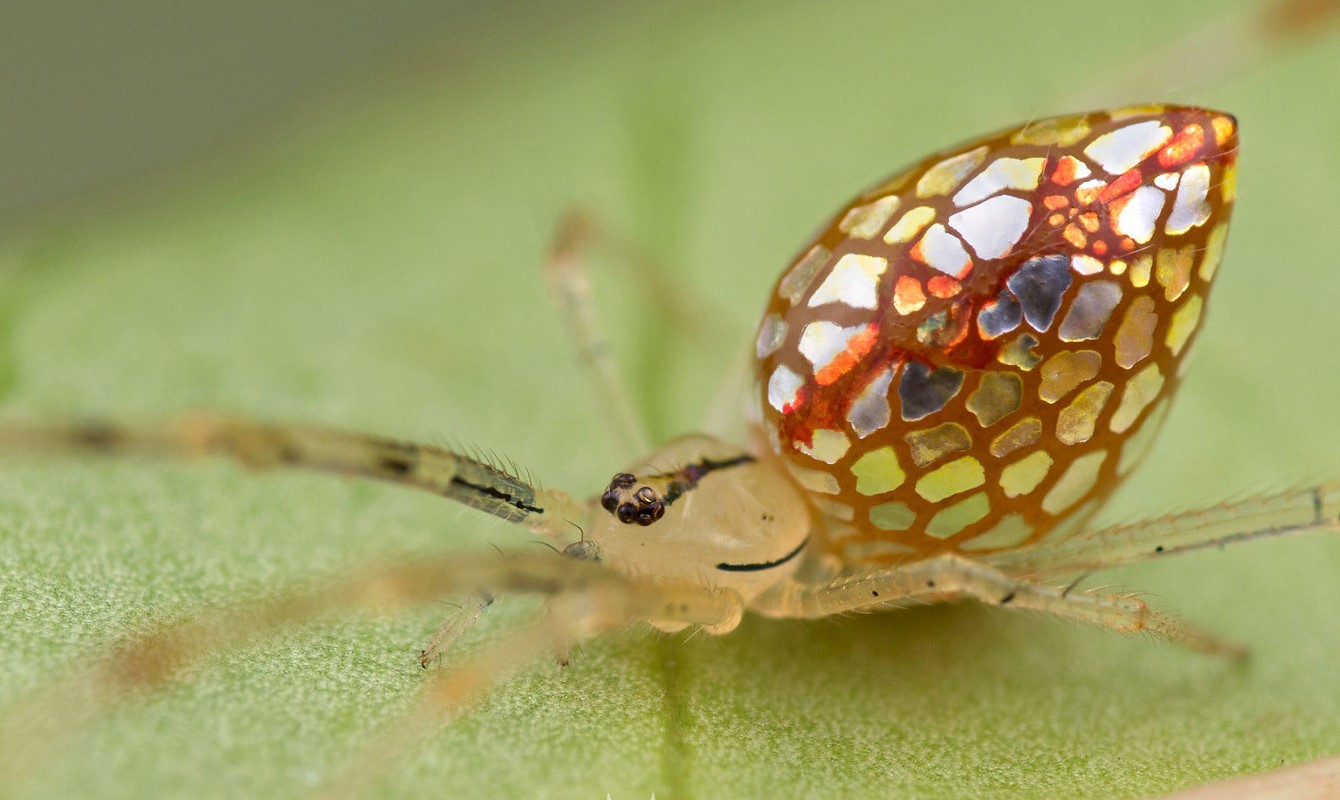
The Mirror Spider, also known as the Thwaitesia argentiopunctata, is a fascinating creature that captivates both scientists and nature enthusiasts alike. This small arachnid, native to the forests of Australia, possesses a unique feature that sets it apart from other spiders – its extraordinary ability to reflect light, almost like a mirror. In this article, we will explore 11 surprising facts about the Mirror Spider, shedding light on its appearance, behavior, and incredible adaptation. From its mesmerizing web to its remarkable mimicry skills, the Mirror Spider is truly an evolutionary marvel. So, let’s delve into the intriguing world of this extraordinary arachnid and uncover some of its secrets.
Key Takeaways:
- The Mirror Spider is a tiny, reflective creature from Australia that uses its shiny body to hide from predators and catch unsuspecting prey with its unique web patterns.
- Despite their small size, Mirror Spiders are skilled hunters with cool mating rituals and excellent sensory abilities, but they need our help to protect their habitats from destruction.
Reflective Body
The Mirror Spider, also known as Thwaitesia argentiopunctata, gets its name from its unique reflective body surface. Its abdomen is covered in mirror-like silver scales, making it appear almost transparent and causing it to blend in with its surroundings.
Camouflage Expert
The Mirror Spider has evolved to be a master of camouflage. By reflecting light and mimicking the appearance of its surroundings, it becomes virtually invisible to predators and unsuspecting prey.
Found in Australia
The Mirror Spider is native to Australia and is predominantly found in tropical rainforests and coastal areas. It is often discovered on vegetation, such as leaves and branches.
Unique Web Patterns
Unlike other spider species, the Mirror Spider does not build a traditional orb-shaped web. Instead, it constructs irregular-shaped webs that are dense and closely resemble a net. These intricate webs serve as traps for its unsuspecting prey.
Size and Appearance
The Mirror Spider is relatively small in size, with females growing up to 5 millimeters in length and males being even smaller. Its body is elongated and slender, with long legs and distinct patterns of silver spots.
No Toxic Venom
While the Mirror Spider possesses venom glands, its venom is not known to be harmful to humans. Its primary purpose is to immobilize and subdue its prey, which consists mainly of small insects and other arthropods.
Mating Rituals
During courtship, the male Mirror Spider performs an intricate display, waving its legs and vibrating its body to attract the female. If successfully courted, the female will lay her eggs in a silk sac and guard them until they hatch.
Lifespan
The lifespan of a Mirror Spider typically ranges from several months to a year. This duration is influenced by various factors such as climate, availability of food, and overall health of the individual spider.
Nocturnal Creatures
Mirror Spiders are primarily active during the night, using the cover of darkness to hunt and build their intricate webs. They remain hidden during daylight hours to avoid predators and extreme temperature conditions.
Sensory Abilities
The Mirror Spider possesses highly developed sensory abilities, including excellent vision that allows it to detect subtle movements and vibrations. This adaptation helps them identify potential prey and avoid dangerous predators.
Conservation Concerns
Despite their intriguing features, Mirror Spiders are not currently listed as a threatened species. However, habitat destruction and climate change pose potential risks to their population in the future, making conservation efforts vital.
Conclusion
In conclusion, the Mirror Spider is truly a fascinating creature that is worth learning about. With its unique reflective body and incredible abilities, it stands out among its arachnid relatives. The Mirror Spider’s uncanny ability to blend in with its surroundings, its intricate webs, and its ability to confuse predators are just a few of the surprising facts that make it an intriguing subject for study.Whether you’re a spider enthusiast or simply curious about the wonders of the natural world, the Mirror Spider is sure to capture your attention. Its incredible adaptations and behaviors highlight the complexity and diversity of the animal kingdom. So, the next time you come across a spider web that shimmers like a mirror, take a moment to appreciate the incredible creature behind it.
FAQs
Q: What is a Mirror Spider?
A: A Mirror Spider, also known as the Thwaitesia argentiopunctata, is a species of spider that is known for its reflective body and unique abilities.
Q: Where can Mirror Spiders be found?
A: Mirror Spiders are native to Australia and can be found in various habitats, including forests, gardens, and coastal regions.
Q: How do Mirror Spiders achieve their reflective appearance?
A: Mirror Spiders have specialized cells on their abdomens that reflect light, giving them their distinctive appearance. These cells are called guanine crystals.
Q: Why do Mirror Spiders have a reflective body?
A: The reflective body of the Mirror Spider is believed to serve as camouflage, helping them blend in with their surroundings and making it difficult for predators to spot them.
Q: How do Mirror Spiders build their webs?
A: Mirror Spiders construct intricate orb-shaped webs using silk that they produce from spinnerets at the rear of their bodies. These webs serve as traps for capturing prey.
Q: What do Mirror Spiders eat?
A: Mirror Spiders primarily feed on small insects such as flies and mosquitoes that get trapped in their webs. They are skilled hunters and can quickly immobilize their prey using their venomous bites.
Q: Are Mirror Spiders dangerous to humans?
A: Mirror Spiders are generally not considered dangerous to humans. While they possess venom, their bites are not known to cause severe reactions in humans. However, it is always best to avoid handling or provoking any spider species.
Q: How do Mirror Spiders defend themselves?
A: When threatened, Mirror Spiders have a unique defense mechanism. They can rapidly move their legs and abdomens in a circular motion, creating a dazzling display that confuses and startles predators.
Q: How long do Mirror Spiders live?
A: Mirror Spiders have a lifespan of approximately one year. The exact duration may vary depending on factors such as the availability of food and environmental conditions.
Q: Are there any conservation concerns for Mirror Spiders?
A: While specific conservation efforts for Mirror Spiders may not be widespread, ensuring the preservation of their natural habitats, such as forests and coastal areas, is crucial for their survival.
Q: Can Mirror Spiders be kept as pets?
A: Mirror Spiders are not commonly kept as pets due to their specialized care requirements and limited availability in the pet trade. It is best to appreciate these fascinating creatures in their natural habitats.
Was this page helpful?
Our commitment to delivering trustworthy and engaging content is at the heart of what we do. Each fact on our site is contributed by real users like you, bringing a wealth of diverse insights and information. To ensure the highest standards of accuracy and reliability, our dedicated editors meticulously review each submission. This process guarantees that the facts we share are not only fascinating but also credible. Trust in our commitment to quality and authenticity as you explore and learn with us.


